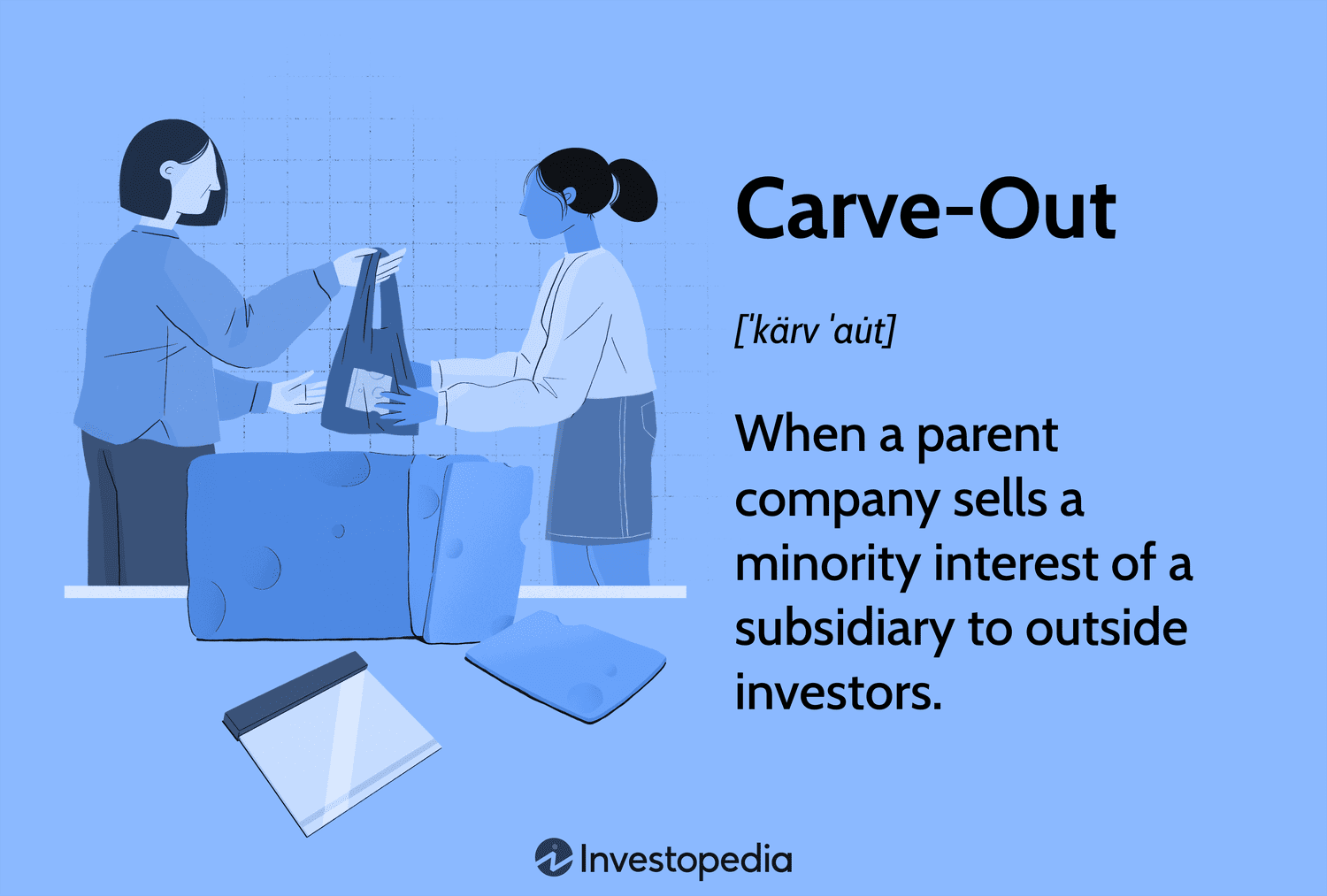
What Is a Carve-Out?
A carve-out separates part of a business from its parent, creating a new entity with public shareholders via an Initial Public Offering (IPO). While the parent keeps a stake, it introduces a new set of shareholders. This strategy allows the parent to benefit from a non-core segment without fully divesting. Unlike a spin-off, a carve-out provides immediate cash to the parent company. Understanding these distinctions clarifies how businesses leverage carve-outs within corporate strategy.
Key Takeaways
- A carve-out is when a company sells a minority interest in a subsidiary to outside investors, retaining some ownership.
- This strategy involves an initial public offering (IPO) to establish the subsidiary as a standalone company.
- Carve-outs can precede a spin-off and allow the parent company to maintain control while gaining strategic benefits.
- A carve-out offers a cash inflow to the parent company, unlike a spin-off which typically does not provide immediate cash benefits.
- The move allows companies to capitalize on non-core business segments while still retaining a stake in them.
Investopedia / Julie Bang
Understanding the Carve-Out Process
In a carve-out, the parent company sells some shares in its subsidiary through an IPO, making the subsidiary a standalone company. By selling shares to the public, a carve-out creates new shareholders in the subsidiary. Often, a carve-out comes before a full spin-off of the subsidiary to the parent company’s shareholders. In order for such a future spin-off to be tax-free, it has to satisfy the 80% control requirement, which means that not more than 20% of the subsidiary’s stock can be offered in an IPO.
A carve-out makes a subsidiary or business unit a standalone company, separate from its parent. The new organization has its own board of directors and financial statements. However, the parent company usually retains a controlling interest in the new company and offers strategic support and resources to help the business succeed. Unlike a spin-off, the parent company generally receives a cash inflow through a carve-out.
Companies may choose a carve-out over full divestiture for many reasons, and regulators consider this in decisions. Sometimes a business unit is so integrated that selling it completely would be difficult without harming its stability. Those considering an investment in the carve-out must consider what might happen if the original company completely cuts ties with the carve-out and what prompted the carve-out in the first place.
Comparing Carve-Outs and Spin-Offs
In an equity carve-out, a business sells shares in a business unit. The ultimate goal of the company may be to fully divest its interests, but this may not be for several years. The equity carve-out allows the company to receive cash for the shares it sells now. This type of carve-out may be used if the company does not believe that a single buyer for the entire business is available, or if the company wants to maintain some control over the business unit.
Another divestment option is the spin-off. In this strategy, the company divests a business unit by making that unit its own standalone company. Rather than selling shares in the business unit publicly, current investors are given shares in the new company. The business unit spun off is now an independent company with its own shareholders, and the shareholders now hold shares in two companies. The parent company does not usually receive any cash benefit, and may still own an equity stake in the new company. To be tax-free for the final ownership structure, the parent company must relinquish 80% of control or more.
The Bottom Line
A carve-out represents a strategic move by a parent company to sell a minority stake in a subsidiary through an IPO, creating a standalone entity while retaining some control. This allows the company to gain cash flow and explore non-core assets without full divestiture. Distinct from a spin-off, which involves existing shareholders gaining shares in a new company without cash benefits, carve-outs provide flexibility for future strategic decisions, including potential full separation. Evaluating a carve-out involves considering its motivations and potential future impacts.




